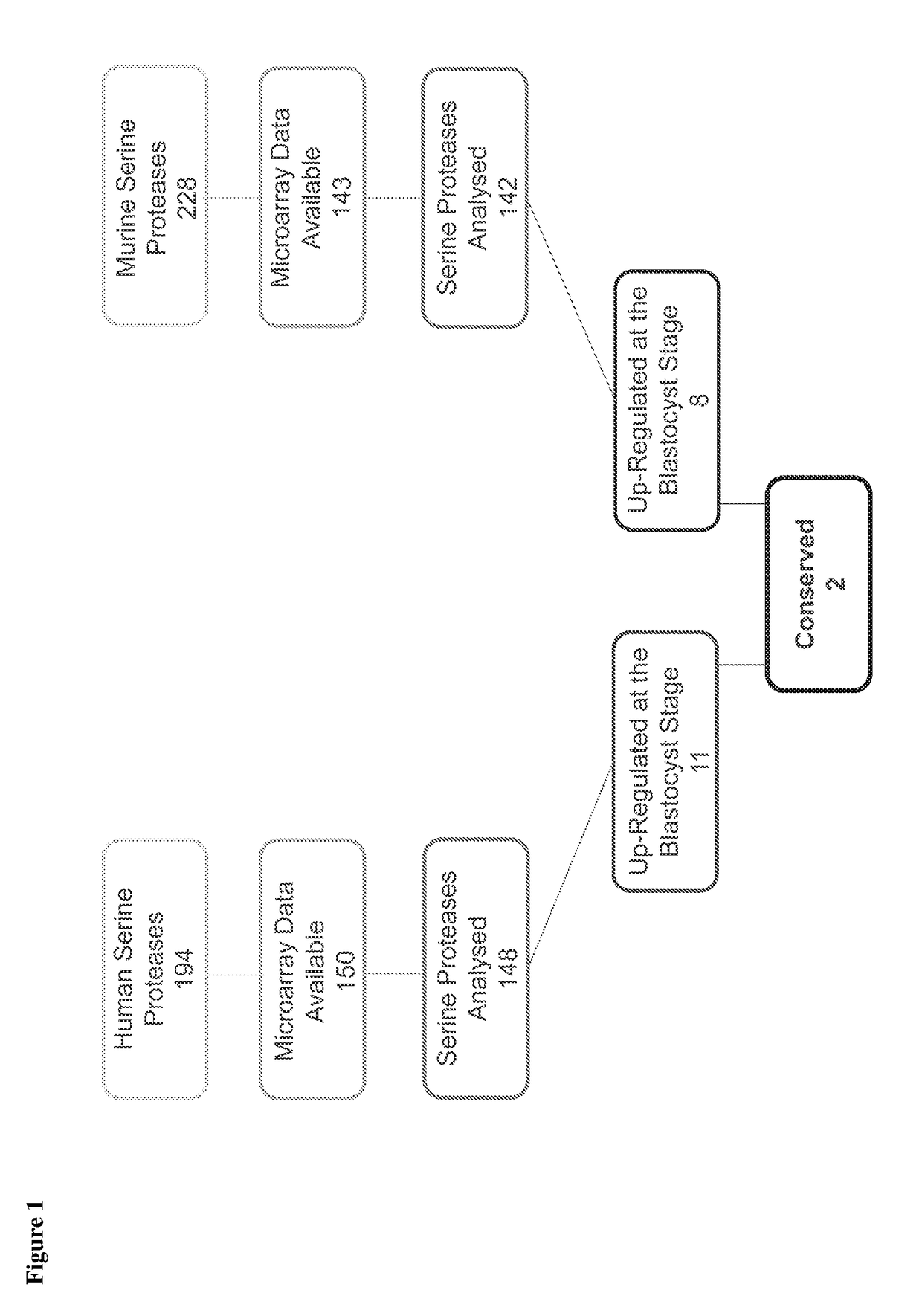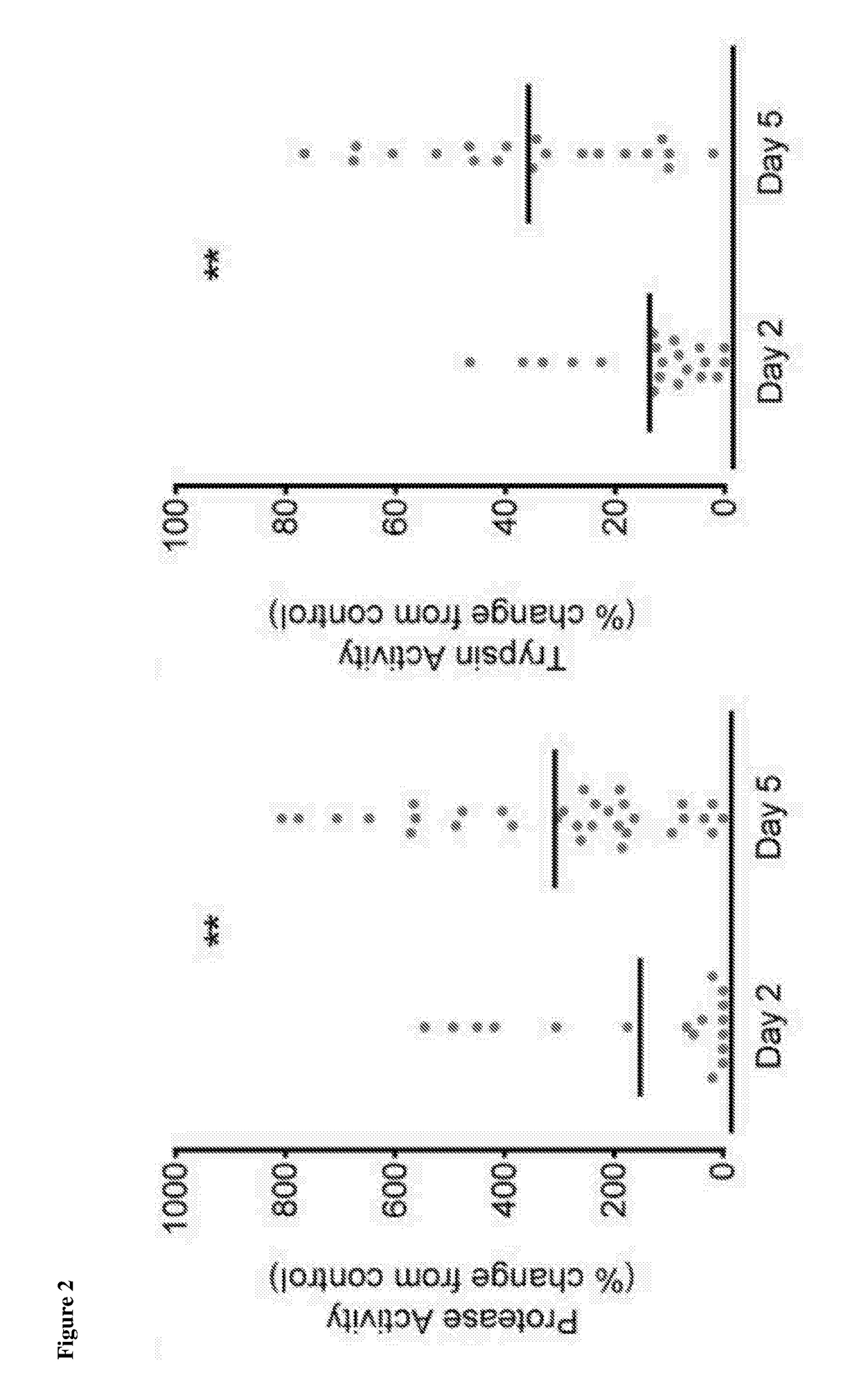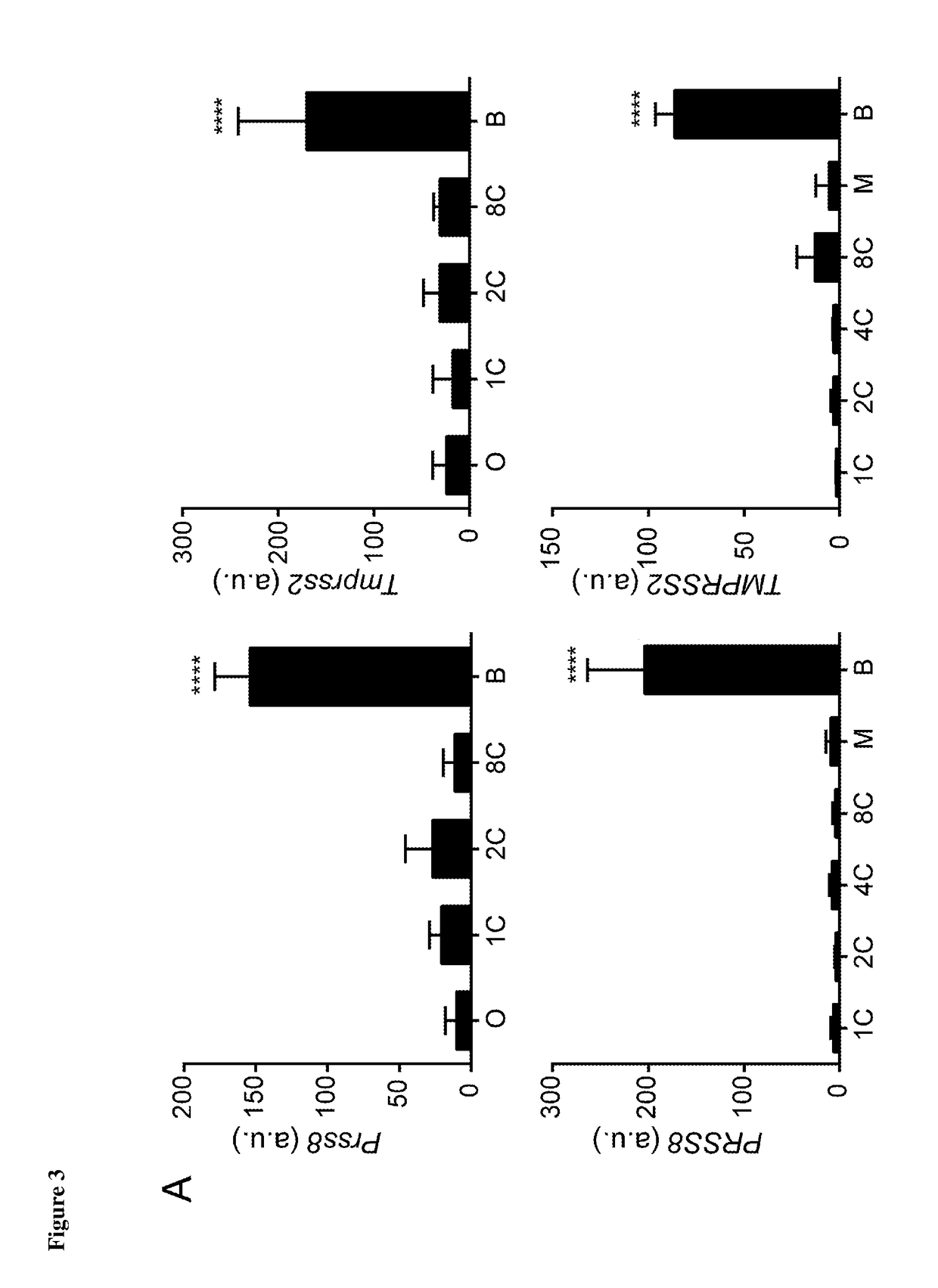Preimplantation screening
a technology of preimplantation and screening, applied in the field of preimplantation screening, can solve the problems of limited success rate of vitro fertilization (ivf), low success rate, and difficulty in selecting good quality embryos for uterine implantation, and achieve the effect of assessing embryo viability
- Summary
- Abstract
- Description
- Claims
- Application Information
AI Technical Summary
Benefits of technology
Problems solved by technology
Method used
Image
Examples
example 1
Analysis of Human and Murine Embryonic Transcriptome for Serine Protease Genes Expressed Throughout Pre-Implantation Development
[0083]In silico analysis was performed on publicly available datasets from the Gene Expression Omnibus project, the GEO project, (Edgar et al. 2002 Nucleic Acids Research, 30:1, 207-210), accession number GSD3959 (homo sapiens) and GDS813 (mus musculus). Statistical analysis of the datasets obtained from the GEO project was performed using SPSS Software, IBM.
[0084]As shown in FIG. 1, a total of 194 human and 228 murine serine protease genes were identified in the available datasets, and microarray data on expression during pre-implantation embryo development was available for 150 and 143 of these genes, respectively. 11 human serine proteases and 8 mouse serine proteases were identified as being selectively up-regulated at the blastocyst stage and 2 of these proteases were found to be conserved between species. These two serine proteases are TMPRSS2 and PRS...
example 2
Measurement of Protease and Trypsin Activity in Embryo-Conditioned Medium (ECM)
[0085]Experiments were carried out to assess total protease and trypsin activity in samples of conditioned media obtained from the in vitro culture of embryos i.e embryo-conditioned medium.
[0086]Embryo conditioned medium was obtained from two IVF units: Centre for Reproductive Medicine (CRG), Universitair Ziekenhuis Brussel, Laarbeeklaan 101, 1090 Brussels, Belgium; Centre for Reproductive Medicine (CRM), University Hospitals Coventry & Warwickshire, Clifford Bridge Road, Coventry CV2 2DX, UK.
[0087]Embryos produced were cultured in individual 20 μl drops of ISM1™ (Origio) and BlastAssist™ (Origio). During this study the CRG changed their culture method to include the ORIGIO® Sequential Series™ (Fert™, Cleav™, Blast™).
[0088]Embryos from CRG Brussels were cultured individually in 25 μl drops of Q1 (Quinn's Protein Plus Cleavage Medium) and Q2 (Quinn's Advantage™ Protein Plus Blastocyst Medium) (Sage In Vitr...
example 3
Immunofluorescent Labelling of TMPRSS2 and PRSS8 in both Human and Mouse Blastocyts
[0095]Human and mouse embryos were collected at various stages of development, fixed in 4% Para-formaldehyde / PBS for 1 hour at room temperature then stored at 2-8° C.
[0096]Embryos selected for use were washed in PBS, permeabilised for 1 hour in 0.01% Triton X-100 / PBS at room temperature and incubated in BSA for 1 hour at 4° C. to prevent non-specific binding. Embryos were then incubated in selected primary antibodies (diluted 1:100 in PBS) or BSA in the case of the negative control, overnight at 4° C. The antibodies used in this study are shown below in Table 1.
TABLE 1NameCompanyCat. NumberAlpha-1-MicroglobulinNovus BiologicalsH00000259-M01Enterokinase*Novus BiologicalsNBP1-55616NANOG*Fisher Scientific12907229PRSS8 (Protease. serine, 8)*Antibodies OnlineABIN761891Anti-SPINT1*SigmaSAB1409704-50UGTMPRSS2 / PRSS10*Antibodies OnlineABIN716876*No commercially available blocking peptides
AMBP blocking peptide ...
PUM
 Login to View More
Login to View More Abstract
Description
Claims
Application Information
 Login to View More
Login to View More - R&D
- Intellectual Property
- Life Sciences
- Materials
- Tech Scout
- Unparalleled Data Quality
- Higher Quality Content
- 60% Fewer Hallucinations
Browse by: Latest US Patents, China's latest patents, Technical Efficacy Thesaurus, Application Domain, Technology Topic, Popular Technical Reports.
© 2025 PatSnap. All rights reserved.Legal|Privacy policy|Modern Slavery Act Transparency Statement|Sitemap|About US| Contact US: help@patsnap.com



